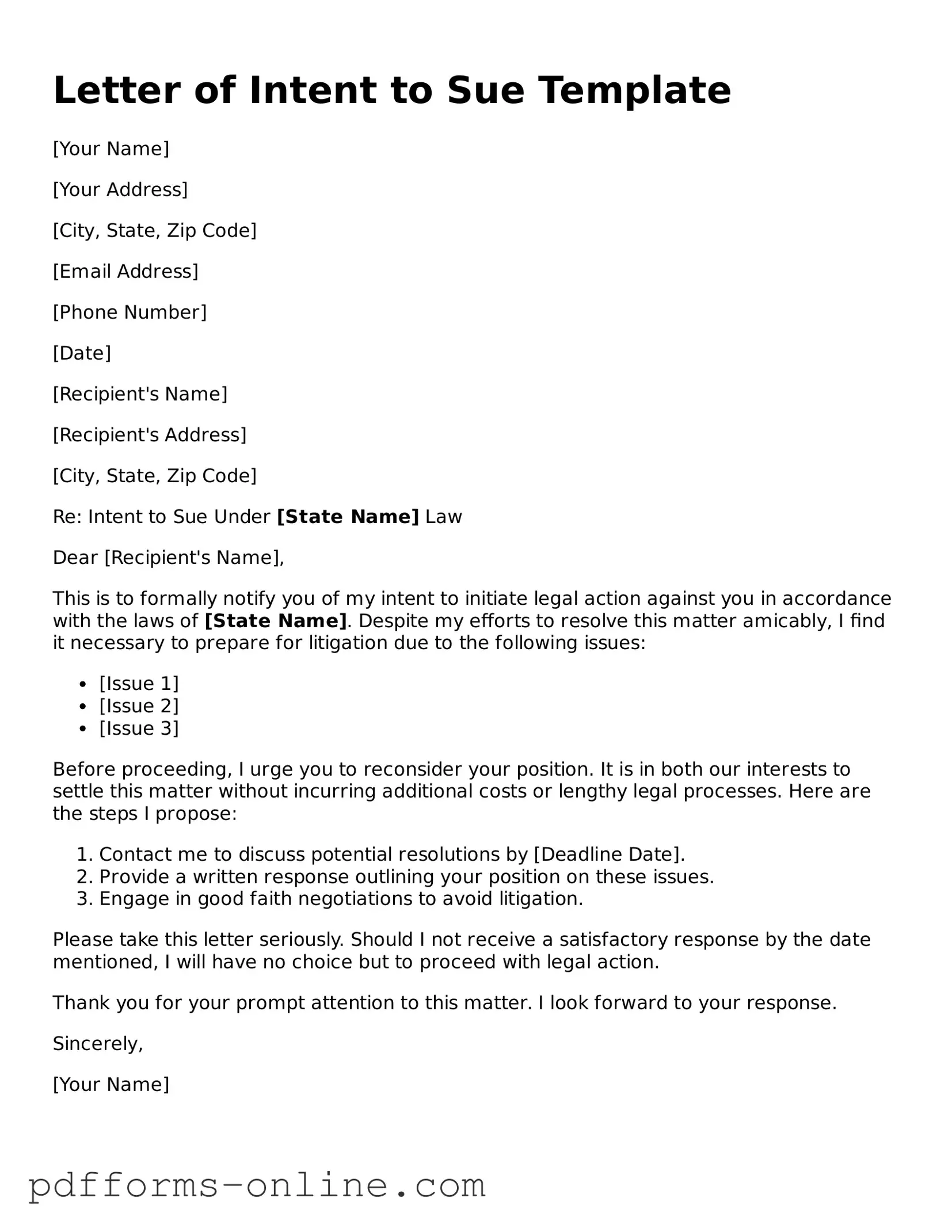A demand letter serves as a formal request for payment or action. It outlines the specifics of a dispute and clearly states what the sender wants. Similar to a Letter of Intent to Sue, it sets a tone for potential legal action while allowing the recipient an opportunity to resolve the issue before a lawsuit is filed. The goal is to encourage negotiation and settlement without escalating to court.
A cease and desist letter is another document that often precedes legal action. It informs an individual or organization that they are engaging in behavior that violates the sender's rights. Like a Letter of Intent to Sue, it warns that failure to comply may result in legal proceedings. This letter aims to stop the offending action without immediate recourse to the courts.
A notice of claim is commonly used in situations involving government entities. It serves as a formal notification of a claim against a government agency. Similar to a Letter of Intent to Sue, it is a prerequisite for filing a lawsuit in many jurisdictions. This document specifies the nature of the claim and the damages sought, allowing the agency an opportunity to respond.
An arbitration demand is a document that initiates the arbitration process. It outlines the dispute and requests resolution through arbitration rather than litigation. Much like a Letter of Intent to Sue, it signals that the sender is serious about resolving the issue, but prefers an alternative to going to court. This can often lead to a quicker and less expensive resolution.
A complaint is the document that starts a lawsuit in court. It details the plaintiff's allegations against the defendant and what relief is sought. While a Letter of Intent to Sue is a warning, a complaint formally initiates legal proceedings. Both documents share the purpose of outlining grievances, but the complaint moves directly into the legal system.
A settlement agreement is a document that outlines the terms of a resolution between parties. It is often the result of negotiations following a Letter of Intent to Sue. Both documents aim to resolve disputes, but a settlement agreement is legally binding, while the Letter of Intent serves as a precursor to potential litigation.
A release of liability form is used to waive certain legal rights. It protects one party from future claims related to a specific issue. Similar to a Letter of Intent to Sue, it addresses potential legal action but does so by preventing claims rather than initiating them. Both documents are used to manage legal risks and clarify responsibilities.
An employment termination letter can serve as a formal notice of ending employment. It outlines the reasons for termination and any next steps. While it may not seem directly related, it shares similarities with a Letter of Intent to Sue in that both documents communicate serious intentions and outcomes. Each serves to clarify positions and avoid misunderstandings.
A non-disclosure agreement (NDA) is a contract that protects confidential information. It establishes the terms under which parties agree to share sensitive information. Like a Letter of Intent to Sue, an NDA can prevent future disputes by clearly defining expectations. Both documents emphasize the importance of clear communication and boundaries in professional relationships.
For those looking to initiate discussions about potential investments, the comprehensive Investment Letter of Intent template can be an invaluable resource. This form aims to clearly define the terms and outline the commitments of both parties, facilitating a smoother negotiation process and laying the groundwork for a future agreement.
A memorandum of understanding (MOU) is an agreement between parties that outlines mutual goals and responsibilities. While it is generally non-binding, it serves to clarify intentions and expectations. Similar to a Letter of Intent to Sue, an MOU can help prevent disputes by ensuring all parties are on the same page before formal agreements or actions are taken.
